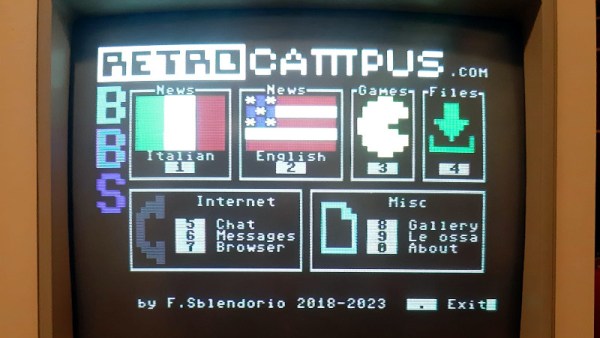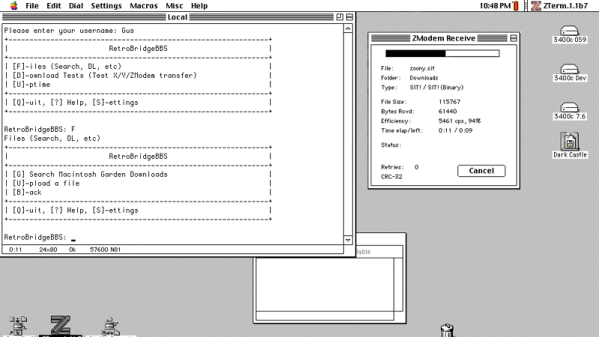The 80s and 90s were the glory days of the BBS. The plain old telephone system was responsible for bringing us connection to other digital beings, along with plenty of spuriously-obtained software and inappropriate ASCII art. [Francesco Sblendorio] has created BBS Builder to harken back to this great era, allowing people to build their own BBSs as they see fit!
BBS Builder consists of basic classes for construction a BBS that operates in PETSCII mode. If that’s unfamiliar to you, it’s the character encoding created by Commodore, also known as CBM ASCII. BBSs created through this software can be accessed by a variety of appropriately 80s machines. The Github page outlines how to create a basic BBS using the code that can be customized to your own liking.
[Francesco] notes the system is compatible with Commodore 64s running RR-NET compatible network cards, WiFi modem cards, and 1541Ultimate hardware using UltimateTerm. Various other methods are supported too, as well as PCs and Macs running Syncterm.
Running a BBS was like running your own website back in the day. With that said, they also had a distinct community flair that is somehow missing from today’s web. Be sure to sound off with your favorite BBS in the comments!













